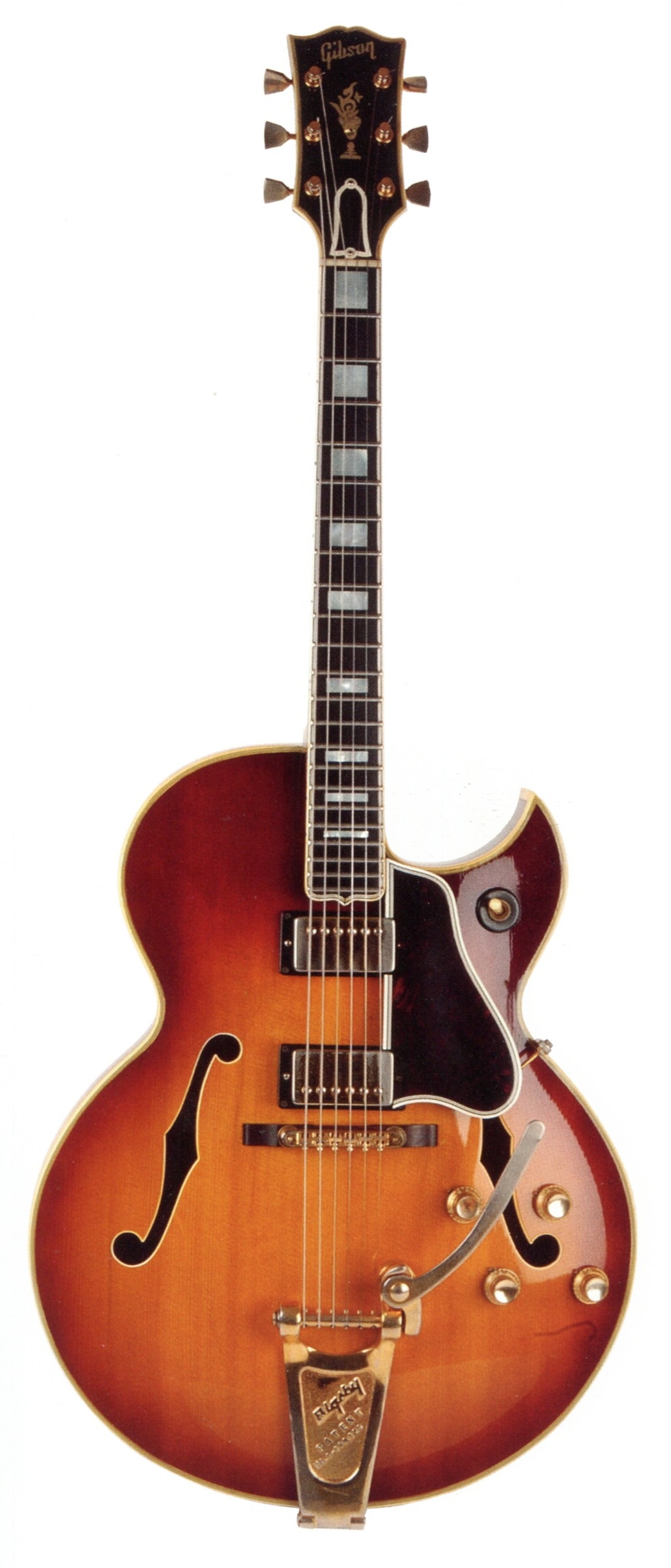Gibson Byrdland

When two leading Nashville-based players, Billy Byrd (1920-2001) and Hank Garland (1930-2004), were invited to discuss guitar design with a Gibson representation in early 1955, they suggested that the company should come up with what Garland later described as “an instrument like the L-5, but with a thin body and a bunch of other stuff”. The Gibson Byrdland was launched later that same year.
Although the guitar was based on the L-5 CES, it was just 2 1/4 inches deep. It also had a slightly shorter scale length and a narrower neck. It was described as “streamlined”, and successfully combined the best characteristics of solid body and conventional designs.
The example you see here has had it’s original tailpiece replaced with a Bigsby vibrato unit.
